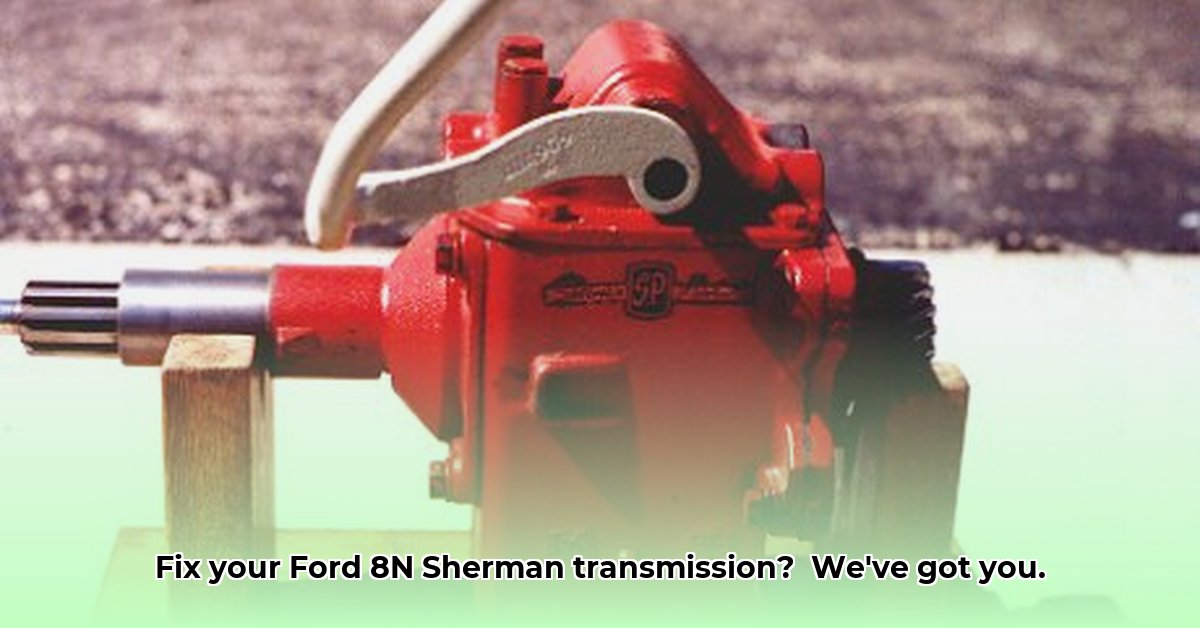
Having trouble with your Ford 8N tractor's Sherman transmission? Is shifting gears difficult, are you hearing unusual noises, or simply concerned about its long-term reliability? This comprehensive guide will walk you through common problems and their solutions, from minor adjustments to major overhauls. We'll focus on clear, easy-to-follow steps, avoiding unnecessary technical jargon. Let's get your Ford 8N back in top working order. For additional information on Ford 8N engine maintenance, check out this helpful resource on Ford 8N head gaskets.
Diagnosing Your Sherman Transmission: What's the Problem?
Before diving into repairs, accurately identifying the issue is crucial. What symptoms are you experiencing? Is shifting gears unusually difficult? Are there any grinding noises? Does a particular gear refuse to engage? Careful observation of these symptoms guides you towards the most effective solution. Pinpointing the problem will significantly streamline the repair process and minimize unnecessary work.
Common Sherman Transmission Issues: What to Expect
The robust Sherman transmission, while durable, isn't immune to wear and tear. Prolonged use inevitably leads to certain common problems. Here are some frequent issues:
Difficult Shifting: If shifting gears feels like wrestling an alligator, worn synchronizers or low transmission fluid are likely culprits. Always check your fluid level first – insufficient fluid exacerbates wear and tear.
Grinding Noises: A consistent grinding sound clearly indicates internal wear, possibly concerning gears or bearings. Ignoring this could lead to more extensive and costly damage later.
Gears Refusing to Engage: This could result from linkage problems, worn clutch components, or internal transmission damage. Always start with checking the simpler components before moving to more involved repairs.
A Step-by-Step Troubleshooting Approach
Let's systematically troubleshoot and fix your Sherman transmission problems. Follow these steps methodically, ensuring to address each point before proceeding:
Inspect the Linkage: Carefully examine all linkages connecting the gear shift lever to the transmission using a flashlight. Ensure proper adjustment and absence of bends or obstructions. Malfunctioning linkages directly impact gear shifting performance.
Check the Transmission Fluid: Locate the fill plug (refer to your owner's manual for location) and check the fluid level. Low fluid necessitates refilling with the correct type. Dirty, dark, or burnt-smelling fluid requires a complete fluid change and filter replacement – a crucial preventative measure.
Listen Carefully: Start the tractor (after confirming neutral gear) and listen attentively to the transmission's sounds while running. Grinding sounds pinpoint specific problem areas.
Test Each Gear Individually: Engage each gear separately, noting any difficulty or inability to shift. This isolates the precise problem area within the transmission.
When Professional Help Is Needed: If the issue persists after these steps, or if you lack experience with tractor repair, it's essential to consult a qualified mechanic specializing in classic Ford tractors. They possess the expertise and specialized tools for complex repairs. This prevents potential damage from improper repair attempts.
Repair or Replacement: Weighing the Costs
If basic troubleshooting fails, a transmission overhaul or replacement might be needed. This is a more significant undertaking with higher costs. Consider the following cost estimates:
| Procedure | Estimated Cost (USD) |
|---|---|
| Transmission Fluid Change | $25 - $75 |
| Linkage Adjustment | $50 - $150 |
| Partial Transmission Overhaul | $500 - $1500 |
| Complete Transmission Overhaul | $1500 - $3000+ |
| Transmission Replacement | $2000 - $5000+ |
Note: These are estimates only. Actual costs depend on location, mechanic's rates, and the extent of damage.
Important Safety Note: Always disconnect the power source before any work on the tractor. Safety is paramount.
Key Takeaways:
- Regular transmission fluid checks and changes are crucial preventative maintenance.
- Addressing minor issues promptly prevents them from escalating into major, costly repairs.
- Don't hesitate to seek professional help when needed; it can save you both time and money in the long run.
Remember, fixing a transmission problem requires patience and attention to detail. With this comprehensive approach, you can significantly increase the chances of getting your Ford 8N back in top working condition. Further information from manufacturer sources would enhance this guide's comprehensiveness.